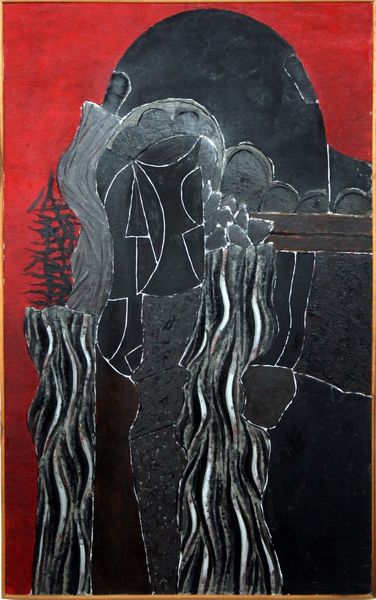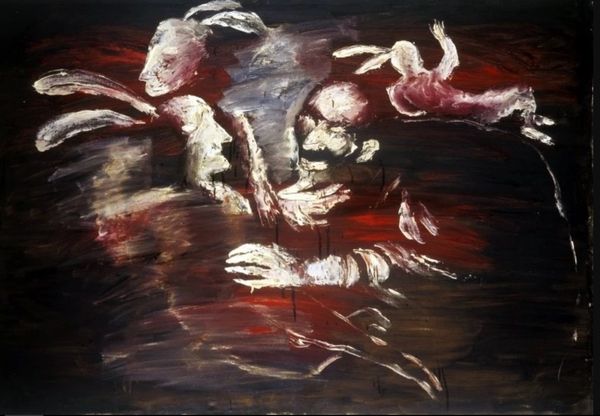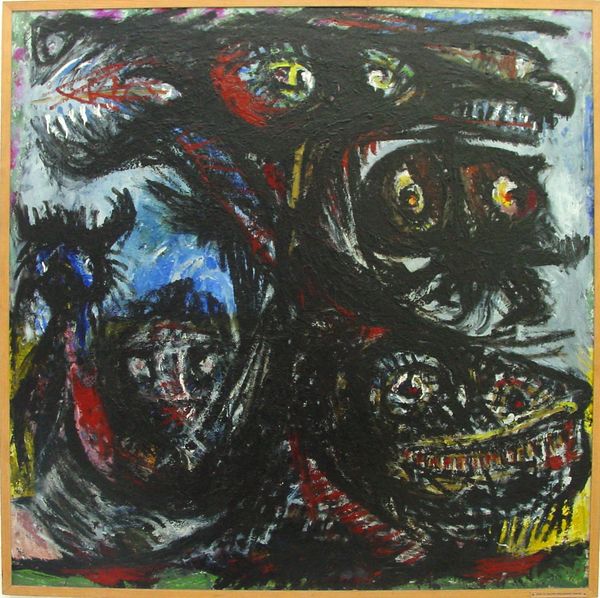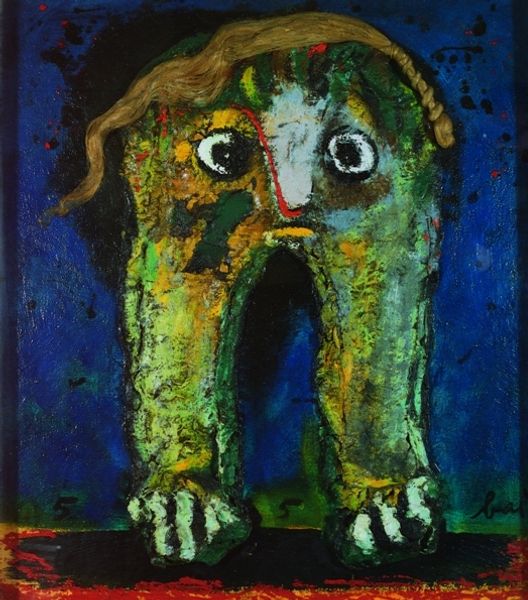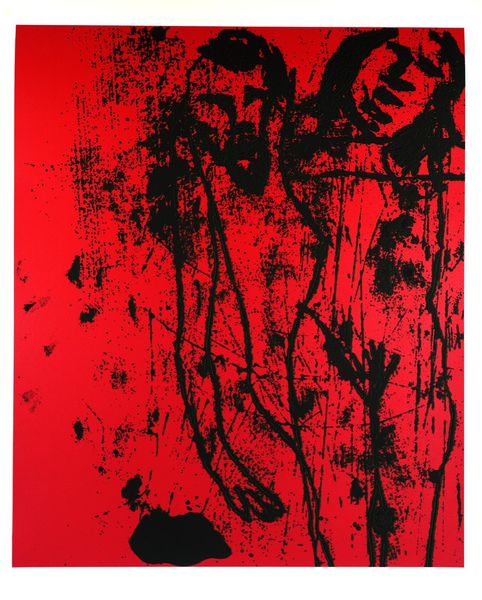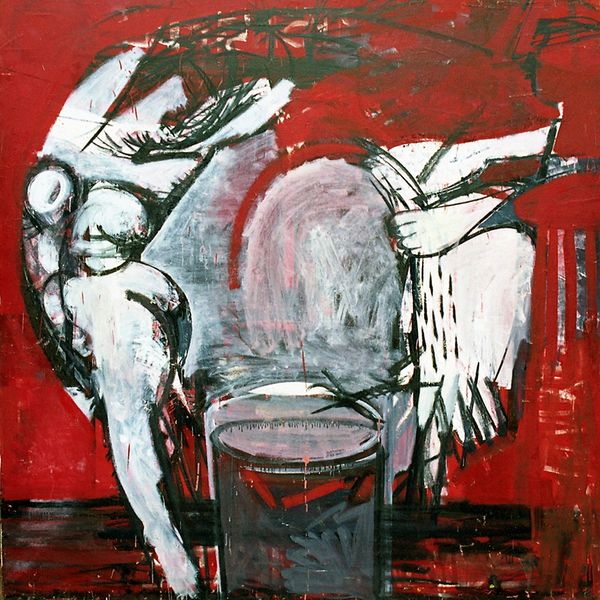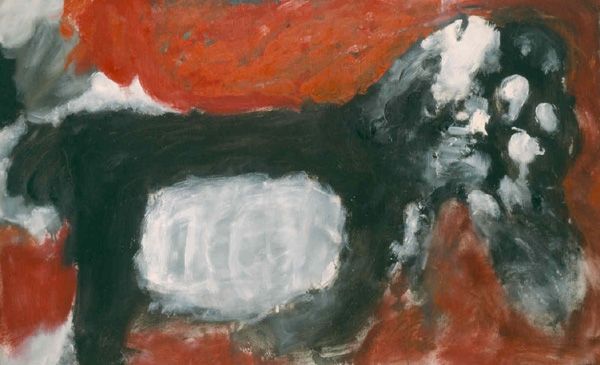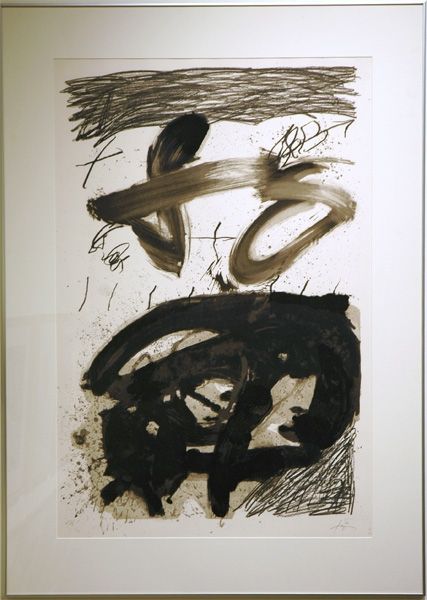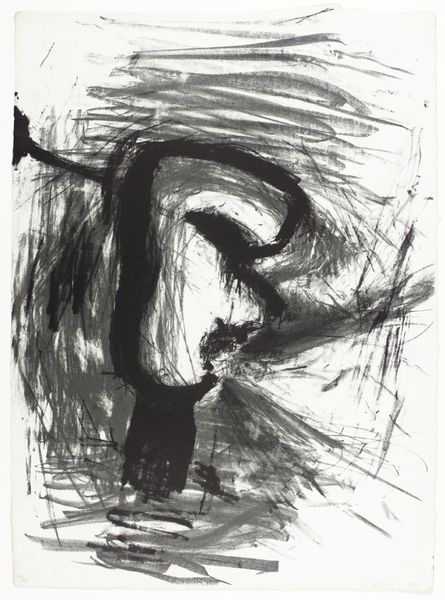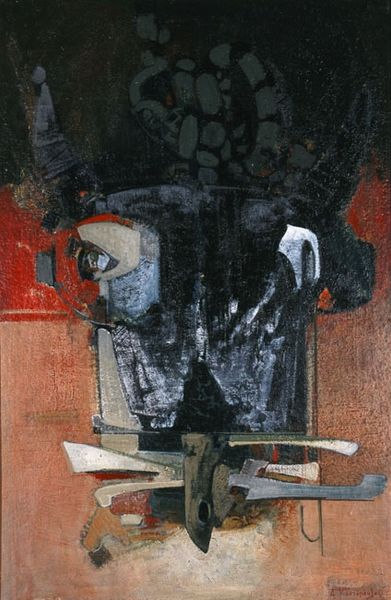
Dimensions: 56.2 x 76.2 cm
Copyright: José Luis Cuevas,Fair Use
Editor: So this painting is titled "Celestina con carne," made in 1965 by José Luis Cuevas, and it's done with acrylic paint. I'm really struck by how unsettling the figure's face is, and the sort of oppressive feeling I get from the dark mass surrounding it. How do you interpret this work? Art Historian: Well, let's think about the title, "Celestina con carne." It's an allusion to the famous Spanish literary character, Celestina, a procuress and sorceress. Cuevas adding "con carne," which translates to "with meat" or "with flesh," really pushes this figure into a more grotesque and perhaps even predatory realm. In the socio-political context of 1960s Mexico, Cuevas was a key figure in the "Ruptura" movement, breaking away from the dominant muralist tradition. Does that give you any clues? Editor: I see...so maybe this distorted, almost monstrous figure is a critique of certain social figures or institutions of the time? Is it maybe meant to depict corrupted power? Art Historian: Precisely. Cuevas used figuration to confront the idealized portrayals that were prominent in official art. Instead, he presents the dark underbelly, the grotesque realities masked by societal decorum. It's expressionistic, of course, but think about the role museums played back then: showcasing approved narratives. Cuevas deliberately countered that with these visceral, disturbing images. How does this reading change your initial impression? Editor: It makes me realize how subversive this painting was at the time, actively challenging accepted norms and narratives through the portrayal of uncomfortable truths. Thanks. Art Historian: Indeed. Seeing art as a form of social commentary gives us insight into the cultural forces that shape both the artist and the society.
Comments
No comments
Be the first to comment and join the conversation on the ultimate creative platform.

